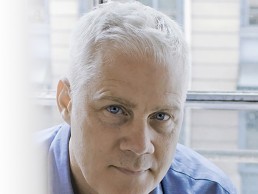
Eric Carlson
What made you become an architect?
I’ve always loved to draw and ever since I can remember I’ve been cognisant about how places and spaces feel, but it’s hard to really know what architecture is at a young age. When I began to design at university I knew this profession was for me.
How important is lighting to your designs?
Lighting is everything. We can discuss ideas for form, space and materials but none of these exist without lighting. Lighting’s importance cannot be overstated as natural and artificial lighting determines if and how architecture is fundamentally. This applies for all of our work whether it’s a house, museum, office or store.
In our work with luxury brands such as Louis Vuitton and Longchamps we focus on creating unique customised designs that respond to the different contexts and cultures, but it’s often the qualities of lighting such as colour temperature, intensity and distribution that creates the thread of continuity that defines the brand.
About the role lighting plays in the light of the city? How do you contribute to that?
Even at the urban scale of the city, lighting is the principle component in determining it’s atmosphere literally and figuratively. Daylighting from the aubergine skies define Paris as much as the Haussmannian architecture. The fluctuations between the foggy diffused morning daylight with the sharp afternoon sun characterises the perception of San Francisco. The list of cities that are defined by their natural lighting is extensive: London, Rio, New York, New Orleans and so on.
The same is true for the role of artificial lighting in urban environments defining their nighttime personalities. When we designed (along with lighting designer Franck Franjou, Paris) the Tiffany & Co. building in Tokyo’s Ginza district with its dazzling night lighting using a minimum of sources we transformed the building’s facade of brushed stainless steel tracery into a giant architectural flame with a vertical lighting system that began as warm 2,000° kelvin colour temperature wash gradated upwards to a 6,000° kelvin colour temperature.
How do you approach lighting a building through architecture?
At Carbondale our first step when beginning a project is to identify a good lighting specialist with whom to work. Lighting, like acoustics in architecture, remains inexact and having a lighting designer as a creative collaborator who is also technically capable and up-to-date is essential in decreasing the unknown variables. The other indispensable aspect in our approach to designing with light, is prototyping. Whether it’s for the night lighting of a facade, or an interior space or a small display counter we build a portion of each element at full scale with the actual materials and the lighting fixture. From the prototypes there is always learning and changes to be made and it’s only then that we fully understand how the lighting will be.
A good example of our design approach with regards to lighting can be found in our store design for the pearl company, based in Australia. Working with the lighting design firm Mindseye, based in London, we realised that ‘the pearl’ was essentially a spherical mirror that reflects all it’s surroundings especially light sources. After a process of in-depth research and testing we identified the ideal techniques for light and finishes for a pearl in a showcase, but we soon realised that when the jewellery was removed from the showcase the qualitative effect was lost. We then decided to apply the showcase lighting concept to the architecture of the space. So, the lighting design became the driving conceptual direction for the store design.
About the importance of shadows and the balance of darkness and light in your work?
For me lighting is like a material, and like materials, there is no good or bad lighting, only the right lighting for the right situation. The goal is finding the appropriate lighting to reinforce the ideas and intentions. From that perspective there are times when the mystery created by heavily shadowed spaces is the appropriate response such as for our design of the 360° watch museum in Switzerland (with the lighting design practice George Sexton Associates, Washington) where the space seems to evaporate in the darkness and only the shifting sparkles from the watches materialise. In contrast, our design for the BMW George V Paris showroom we created a special VIP area called the ‘White Room’ where diffused natural and artificial lighting combine with the matt whites floor, ceiling and wall surfaces create a shadowless cloud-like atmosphere.
About the best and worst illuminated spaces you have visited?
I live and work in the centre of Paris and I walk through La Cour Carrée of the Louvre in the morning on my way to work and in the evening on my way home. By day the direct sunlight accentuates the heavy relief of the facade’s stonework and by night the artificial lighting is positioned to replace the sun recreating a similar daytime shadowing effect. However, because of the brain’s expectations the daytime lighting effect when seen at night remarkably transforms the facade into a surreal theatrical stage set.
It’s more difficult to give you an example of the worst illuminated spaces as there are so many and when they’re bad. There’s nothing worse.



